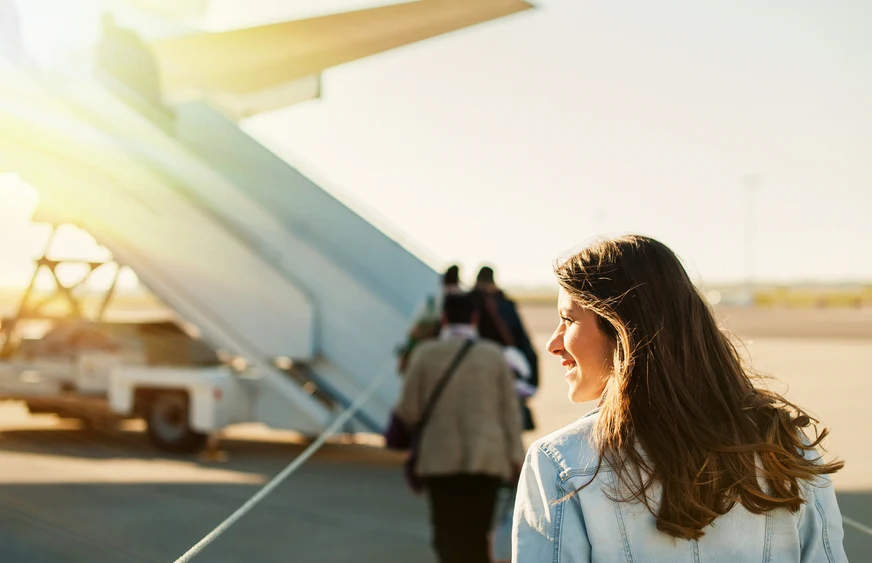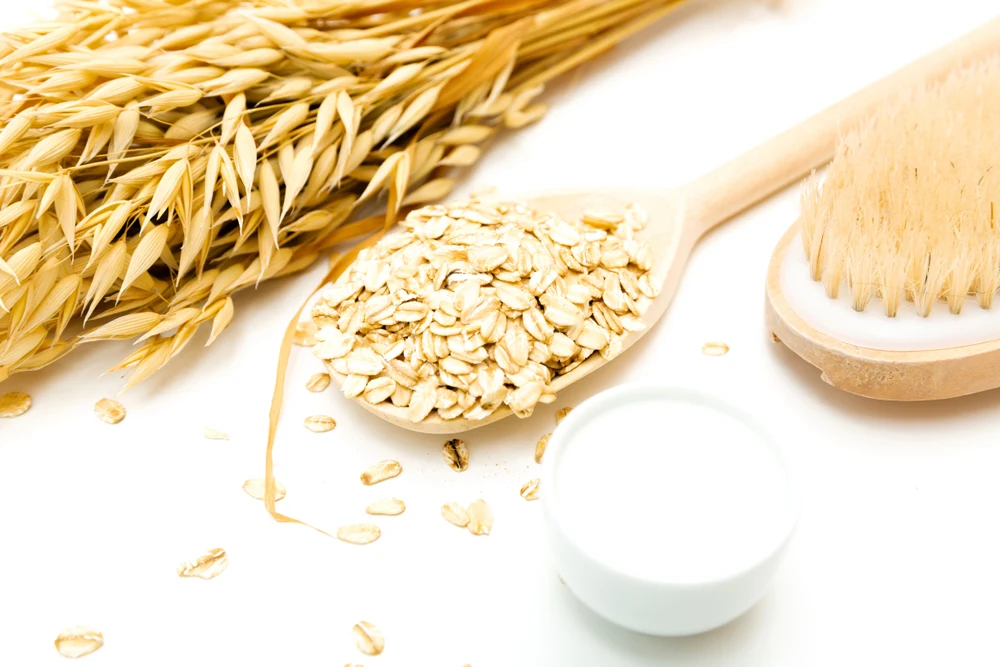Whether you're traveling for work or play, it can be tempting to let your skincare routine fall by the wayside. It's just for a few days, right? It happens! We totally get it.
But if you’re travelling by plane, your skin’s precious moisture could be in jeopardy. Air travel can dry out your skin, so it’s important to stay on top of your skincare game if you want to look and feel your best upon arrival.
Read ahead for a few tips and travel skincare essentials you can use to set yourself up with healthy looking skin—no matter where you’re headed.
Why you get dry skin during air travel
You may have noticed that traveling by plane can leave you feeling dehydrated, with skin that is dry, oily, or generally uncomfortable. There’s a reason for this. Air cabins are notoriously dry, with low humidity, which causes the air to draw upon available moisture in your skin. If you have typically dry skin, this means it will only become drier. If you have oily skin, it may become even more oily, as the decreased moisture will cause your skin to produce more oil in order to replace it.
You’re likely to suffer the worst consequences on the cheeks, according to a 2011 study, which observed that as the air pressure dropped to 10 percent humidity on a long-distance flight, passengers rapidly lost hydration in the outer layer of their skin on the face and forearms.
Building an air travel skincare routine
By building a reliable and easy air travel skincare routine, you can help prevent moisture loss and keep your skin looking and feeling its best.
Prepare skin for flight (from the outside)
Prepare for flight by applying moisturizer all over the body before you even leave for the airport. After moisturizing, apply a sunscreen with a high SPF on hands, arms, ears and face. Did you know that melanoma cases are twice as common among airline pilots and cabin crew members? That’s due to their higher exposure to ionising radiation at high altitudes. Additionally, consider going light on makeup, or skipping it altogether. This will give your skin a chance to breathe while in the air.
Once you’re in your seat, apply a hydrating SPF lip balm to keep your lips from chapping while up in the air.
Prepare skin for flight (from the inside)
Plane skincare routines also require preparing from within. Be sure to drink plenty of water before you lift off to protect against moisture loss in the skin, and potential dehydration. Consider bringing an empty water bottle along and filling up at a fountain. And while you may be tempted with a coffee or soda, try to avoid caffeinated beverages; caffeine has a mild diuretic effect that some experts believe can be dehydrating.
Make your products easy to access
If you’re on a long flight, you’ll likely need to reapply moisturizer and SPF throughout the journey. But even if it’s a quick trip, it’s helpful to have some travel skincare essentials handy so you can respond to dry skin or other afflictions in the moment.
Visit the travel-friendly section of your drugstore of choice before you fly to pick up moisturizers, sunscreen lotions and makeup remover wipes in approved sizes. Keep them in your carry-on bag, so you can easily access what you need once you’re in the air. Depending on the length of the trip, you might want to reapply a light layer of moisturizer to your face, arms, and hands every few hours.
Make air travel a chance to treat yourself
You don’t have to wait until you arrive at your destination to take a little time in the air to treat yourself, giving your skin more care than usual. If your day-to-day life is too busy for masks and treatments that need to sit on your skin for a while, a plane ride is a great excuse for a little treat.
Have a few hours to relax after you land? Take the chance to sit back and enjoy a Skin Relief Repairing hand mask, finally try out those under-eye gel patches you've heard about or soothe your hands with a moisturizing lotion. For long-haul trips, take in-flight skincare to the next level by wearing a moisturizing mask while you sleep.
Slugging—or covering your face in a thick emollient before sleep—is becoming a popular final step in many nighttime skin routines. Taking an overnight flight is a good opportunity to “slug” your face with a rich product like Aveeno® Positively Radiant Night Cream. With tone-correcting soy and niacinamide, it will moisturize to even skin tone and texture as you sleep.
Maintaining beautiful happy skin after landing
Once you arrive at your destination and deplane, wash your hands, grab a makeup wipe to cleanse your face and layer on a gentle moisturizer to soothe dry skin. Follow it up with lightweight SPF protection if you're planning to step out into the sunshine. If you're totally zonked from the flight, slather on a face cream before you head to sleep.
Back at your home or hotel room, wash your face with a hydrating cleanser to help restore some moisture that was lost during transit. Whether you're tucking in for the night or just doing some light unpacking before heading out, the moisture boost will help your skin recover in time for your next adventure.
Frequently Asked Questions
What are the best skincare tips for travelers?
It’s critical to prepare your skin before you embark on a trip by cleansing and moisturizing. Drinking plenty of water before a flight is also key, as dehydration is common during long hours on a dry plane. Pack plenty of travel-sized products to have on hand, including makeup wipes for a quick refresh you can use on the go to cleanse away the sweat and dirt of a grueling trip.
How can I prevent dry skin during flights?
Moisturize face, arms, hands, and feet with your preferred products before you get on the plane, and reapply every few hours in the air to help prevent moisture loss in your skin. Stay hydrated, and avoid diuretics like coffee and alcohol that can further dehydrate you and your skin. Plane skincare routines are really no different from your everyday regimen, it just might require a little extra planning.
What should I pack in my travel skincare routine?
In-flight skincare essentials include an everyday moisturizer, an SPF sunscreen lotion, and a hydrating lip balm with SPF. Remember to bring products in sizes approved by the TSA.
How can I keep my skin hydrated while travelling?
For an effective airplane skincare routine, remember to apply sunscreen and moisturizer periodically while in flight. If you are travelling for an extended vacation, bring your skincare routine with you, so you can stay comfortable and confident no matter where you are.



